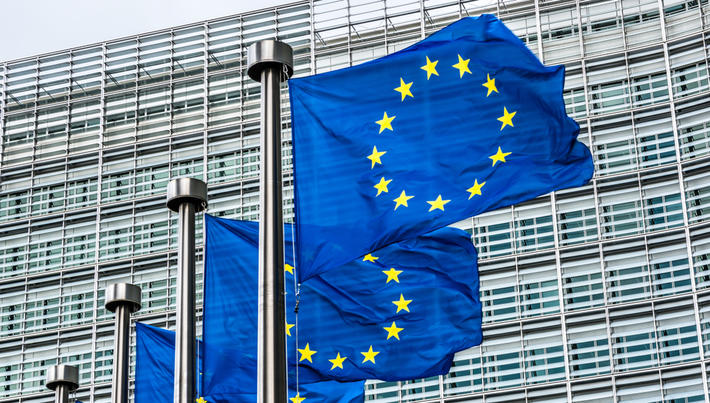
Reflections on the aluminum system in the EU, on the primary metal deficit and on courageous strategic choices
To the post Covid-19, a phase still in progress, we add the expensive energy, and then the conflict in Ukraine: there is matter to reflect on the consequences for producers and users of aluminum in Italy and in Europe.
The trend of primary aluminum in the EU in 2022
A starting point is the possible shortage situation on the world primary aluminum market, estimated months ago at around 2 million tonnes out of the approximately 70 million tonnes of world demand, partly as a consequence of the fact that China in the two-year period 2020/21 it had been a net importer of primary for 2.6 million tons. Let's say it was, because it is recent news that with extraordinary flexibility, China is today again an exporter of both primary metal and semis and aluminum products, and we will then see the possible consequences.
Since the high energy costs in Europe have gradually led to the progressive closure of many smelters, in the EU we are undoubtedly in a situation of extreme vulnerability as it produces only less than a quarter of the primary essential to feed the downstream industry. just under 2 million tons of primary crude produced against the necessary 7.8 million tons of consumption.
In Italy there has even been no production of primary aluminum for many years, we are totally dependent on imports for all requirements, which are around 1.3 million tons / year of primary compared to a global national consumption of metal. primary + secondary, of 2.2 million tons (year 2021).
To this we must add, in view of the ongoing conflict, the possible problems of supply of Russian metal. Russia is the second largest producer of primary aluminum in the world, accounting for 6% of the world total, and is an essential supplier of primary aluminum to the EU; Russia covered last year's European needs for 12% of the total and produces 20% of the primary metal with a low carbon footprint worldwide.
Regarding Italy, the primary share imported from Russia in recent years covers 10% to 15% of the requirement; taking into account the expected condition of metal shortage in the near future, not only Russian primary aluminum appears difficult to replace in the EU and consequently in Italy, but its lack as a result of any sanctions could have very significant effects on the metal prices on the stock exchange.
The experience of 2018 with the sanctions introduced in the United States led to a surge in the price of aluminum by more than 30% and for this reason those measures were quickly canceled. To give an idea of the possible sanctions effect, we recall that the LME quotations of the metal had remained substantially stable in the $ 1700 - $ 2200 / t range from 2010 to 2020, after which a strong inflationary push was manifested until reaching $ 3900 this year. , with stratospheric prizes on 'duty paid' loaves up to over $ 600 and on billets up to almost $ 1600.
It does not appear a comforting situation for the old continent, yet we are still keeping alive a primary import duty in the EU that does not have the slightest justification, it is now only a small income for a few and an extra cost of loss of competitiveness of the European system of aluminum compared to the rest of the world up to almost $ 200 / t.
A powerful handbrake capable of opening the doors in the EU to Chinese aluminum in all forms, especially given the current market conditions, in the form of semi-finished products, both in the European and North American markets, in ruthless competition with each other to satisfy internal primary needs. The duty on primary raw aluminum is a sad story that the ignorance and short-sightedness of the institutions has deliberately left unresolved for decades; we recall that already in 2011 the study "Competitiveness of the EU Non-ferrous Metals Industries" commissioned to ECORYS Research & Consulting by the European Commission, Directorate General Enterprise & Industry, quoted: "The main results of this assessment of the EU tariff regime are as follows: under the current tariff regime, primary aluminum production in the EU has not grown; investments to expand production have been made outside the EU, and EU demand for primary aluminum is increasingly satisfied by imports. We conclude that the reasons for having import duties (of primary aluminum) are not very strong. One of the main cost factors that the import duty should offset is the cost of electricity. However, the use of import tariffs as a form of compensation for high energy costs does not address the fundamental question of the competitiveness of the high cost of energy for EU producers; this problem must be addressed through an EU energy policy and policies adequate to address the implications of the ETS ".
A decade has passed and these important recommendations, fully confirmed by in-depth studies conducted in 2015 and 2019 by the LUISS University of Rome on the aluminum industrial system in the EU, which assessed the excess cost of the duty at around 1 billion euros a year. (at the prices of the primary at the time - between 1700 and 2200 $ / t), they remained unheard, and so we arrived at today's difficult situation, with the evident acknowledgment that this duty did not save the upstream production, but on the other hand, for decades it has been sucking money and damaging the entire aluminum downstream in the European Union.
Source: A&L Aluminum Alloys Pressure Diecasting Foundry Tecniques


